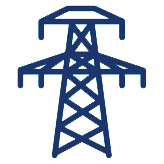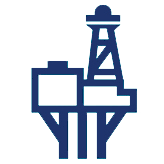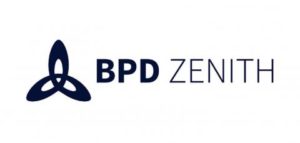Agile and Hybrid development create better outcomes for Maximo® and Fingertip clients
Recently some of our best projects have involved working with our customers to develop Maximo® using Agile development methodology.
Agile development delivers a number of benefits:
- Better stakeholder engagement
- More transparency in the project
- Faster delivery
- Predictable costs and schedule
- Focus on value and user experience
Change has been allowed and adopted at the core of the development cycle, to give iterations toward a great delivery. This has delivered projects that get higher user adoption and meet business objectives, on time and at a lower cost.
We have a history of successful Maximo® projects delivered using a proven, structured ‘Waterfall’ (linear) model – however, in 2014 we adopted Agile for Fingertip development.
‘Waterfall’ Methodology
We soon saw the benefits of the method, and applied the toolset and methodology initially produced for Fingertip to some of our Maximo® projects with great success. Over time we have combined Agile with our proven, traditional waterfall Maximo® implementation for a hybrid agile approach.
This gives the benefit of a tried and trusted, gated delivery method for infrastructure design and project governance – particularly important for regulated industries. When combined with the flexibility of Agile in development and the better results Agile brings, this gives customers the best of both worlds.

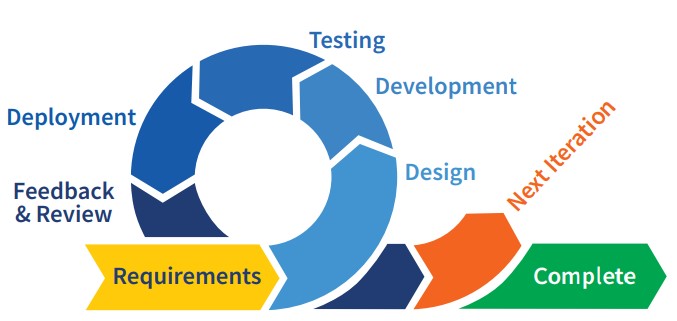
However – anyone who knows Maximo® understands that achieving Agile development is not so easy. For true adoption, frequent deployments and higher frequency testing is mandatory to achieve successful sprint development cycles, and this has a cost in Maximo® terms.
Peacock have developed a specific automated testing and deployment toolset specifically to enable customers to achieve these frequent test and deployment cycles.
This means that some customers can achieve a production drop every 3 weeks if required. We also manage and refresh multiple development environments for Customers using the automated deployment tooling in order to support parallel development workstreams. This delivers more value to the business in a shorter timeframe, with no impact to quality.
Advantages of the Agile Implementation Process
For SaaS companies like Peacock Engineering, the deployment of Agile methodology is ideal for large or complex implementations with unclear, incomplete or fluid requirements.
Agile implementations break deployment tasks into short increments with minimal planning and without concrete long-term planning. Each iteration (represented by a loop) generally lasts between 2 and 4 weeks and is driven by a cross-functional team.
Towards the end of each iteration, the team delivers a working solution that is verified by the customer and in many cases the end-users.
Each subsequent iteration builds upon the prior for a cumulative effect.
The Agile process demonstrates value earlier and continuously, increases project visibility and forecasting, and reduces risk as deviations are recognized more quickly.
By dividing the implementation into smaller and more manageable increments, development teams can more quickly adapt to incomplete or changing requirements.
This reduces waste, rework and project administration while also providing earlier assurance that development delivery meets user expectations.
After each iteration of a project, smaller releases enable collaboration with client quicker rather than a larger release at the end.
The Agile process demonstrates value earlier and continuously, increases project visibility and forecasting, and reduces risk as deviations are recognized more quickly.
By dividing the implementation into smaller and more manageable increments, development teams can more quickly adapt to incomplete or changing requirements.
This reduces waste, rework and project administration while also providing earlier assurance that development delivery meets user expectations.
After each iteration of a project, smaller releases enable collaboration with client quicker rather than a larger release at the end.
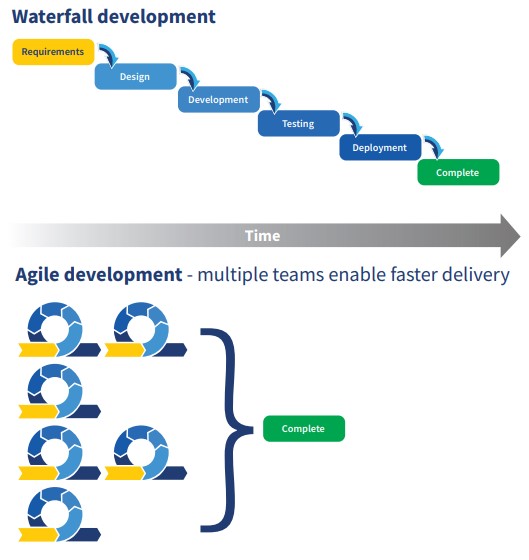
Case Study:
“We recently migrated a ‘Big Six’ energy provider’s Maximo® solution to our Managed Cloud Service (initiatives including upgrading Maximo® from 7.5 into the current supported version of 7.6.1.)
This includes a dedicated private cloud with multiple integrations, and a comprehensive support contract that dovetails with the client’s own support team and our off-shore resources.
Our team worked collaboratively to develop comprehensive security protocols and standards to meet their needs as a Critical National Infrastructure operator.
This project comprised Sprint Planning, Show & Tell Sessions and Daily Stand-up meetings as part of the ‘agile’ development methodology.
At the end of each sprint, the developers delivered show and tell sessions to the product owners; these outlined the functionality and build and any issues that needed to be resolved before proceeding to the next iteration process.
Furthermore, having our own cloud managed service allowed us to deploy sandboxes for development very quickly therefore enabling Agile development to start almost instantly.”
Get started with a better EAM solution – contact our experts today
Call us on +44(0)20 3356 9629 or use our contact form below.Contact us now
Agile development methodology enables faster implementation of EAM solutions 020920
